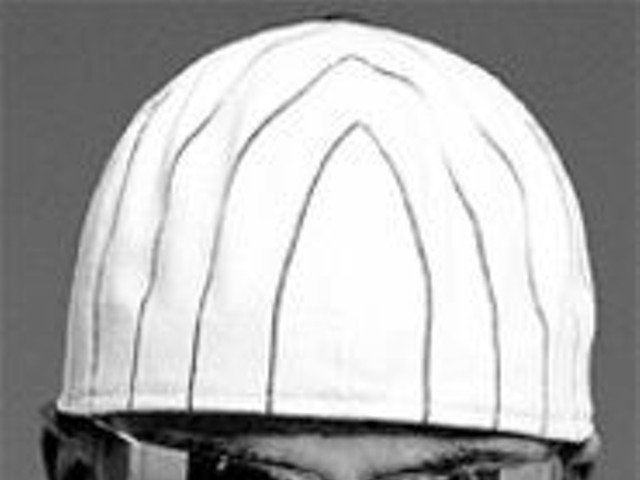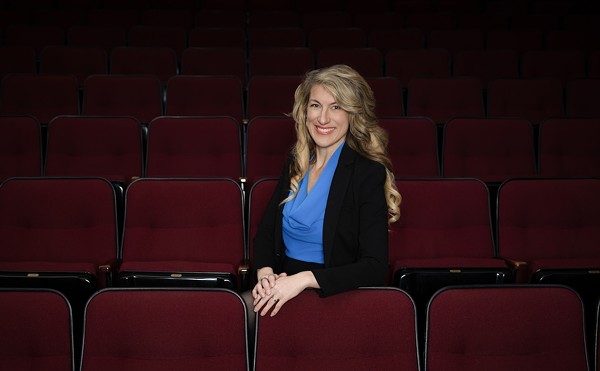Jane Martin's Jack and Jill attempts to shed new light on the difficulties of maintaining a relationship in our AIDS-ridden, self-centered, politically complicated world. Telling the story through short scenes and a series of monologues, Martin's script uses film techniques -- rapid location shifts, multiple costumes changes and overlapping "hyper-realistic" dialogue. The play would probably work better as a movie, which could provide a real environment for the characters to live in, and where the camera could stop while actors changed their costumes.
Instead, in Muddy Waters Theatre Company's season-closing production, the actors must change clothes in front of the audience while delivering heartfelt monologues (ever notice how hard it is to talk while pulling a sweater over your head?), assisted by a "dresser" character who everyone pretends isn't there (like a koken from Japanese theater). The combination of theatrical styles borders on the absurd. Are these characters talking directly to the audience -- and if so, why are they in their underwear? Are they actors changing costumes pretending they're characters not changing clothes? This meta-theatrical flavor works well in Martin's play Anton in Show Business, where the whole point of the production is to critique the show-biz world. But here it only distracts from what should be the central focus: the characters and their relationship.
Cameron and Patty Ulrich, the husband-and-wife team who founded Muddy Waters, play Jack and Jill. In the first act, while romance sputters and sparks and eventually dies, they seem as disconnected as actors as the characters are in the play. Words sound like pieces of memorized dialogue, not true conversation; rapid-fire confrontations are marred by awkward pauses. But in the second act, as the characters undergo significant change, both actors seem to come alive. Suddenly they are genuinely listening and reacting; emotion arises from unmet needs. Their final encounter crackles with a volatile undercurrent of energy and desire.
Perhaps the most compelling character (unintentionally) is the dresser, played with intensity and grace by Julie Stockhausen. Particularly in the first act, when much of the dialogue seems overly wordy and the central characters' motivations are unclear, the dresser becomes the audience's touchstone. When she shifts we know the play is moving forward. She has clear actions to perform and is focused on completing her goal -- unlike the characters, who are mired in unnecessarily confusing psychological quicksand.
Jack and Jill is presented in-the-round, a wise choice for this intimate play. Director Harry Hakanson smartly stages the scenes so that no audience member has to look at an actor's back for too long. One of the difficulties in arena staging, however, is volume: When actors are turned away from a section of the audience, they need to compensate by kicking up the sound level. While both actors had moments when they couldn't be heard, Patty's voice was more often lost in the gymnasium-turned-theater performance space. (Though perhaps the problem owed more to the fans that keep the audience and actors from overheating in the poorly ventilated room.)
No set, light or costume designers are listed in the program, implying that the Ulrichs created all aspects of this production. The underdressed set -- a few stools and props -- doesn't provide enough realistic details to anchor the action. The costume changes, by contrast, are overdone. Does Jill really need a new outfit for each scene? Perhaps less energy spent on clothes-changing would result in more energy devoted to honing the characters' interactions and pulling the audience into the complex world of the play.





